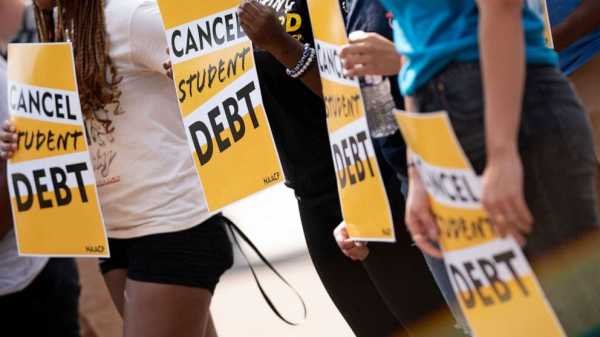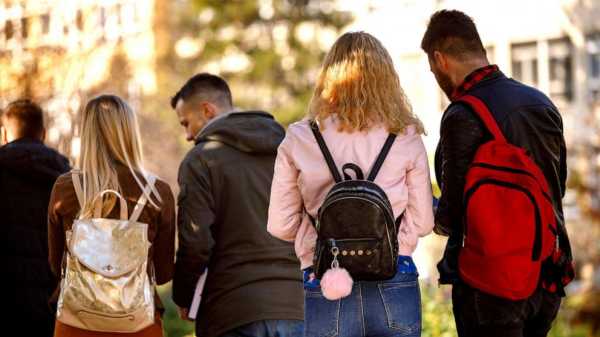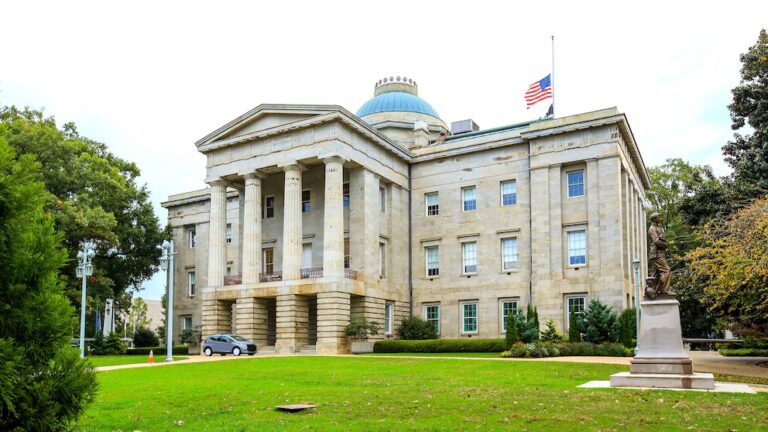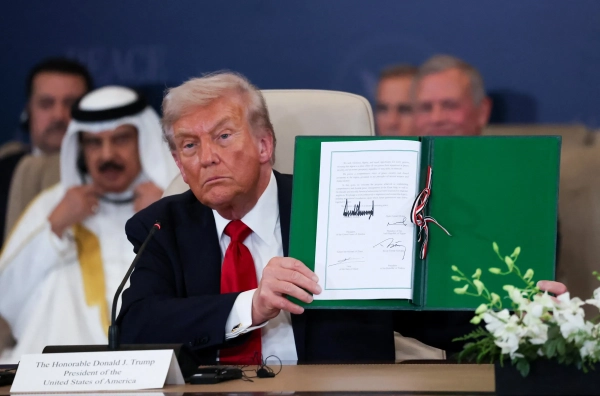Americans who qualify for the student loan relief President Joe Biden announced Wednesday can apply starting in early October, the White House said Friday.
Relief will come four to six weeks after borrowers submit applications, an administration official said.
"Once the borrower completes the application, they can expect relief within four to six weeks," Bharat Ramamurti, deputy director of the National Economic Council, said during a White House press briefing Friday. "So borrowers are advised to apply by roughly Nov. 15 in order to receive relief before the payment pause expires on Dec. 31."
Applications will remain available after mid-November, but applying by Nov. 15 should guarantee that relief will come before student loan payments resume in early 2023, he said.
"In our view, if you submit by early to mid November, you should get your relief before the restart happens at the end of December," Ramamurti said.
The pause on student loan payments, which has been in place since March of 2020, resumes on Dec. 31, 2022.

Activists hold cancel student debt signs as they gather to rally in front of the White House, Aug. 25, 2022.Stefani Reynolds/AFP via Getty Images
MORE: Biden's loan forgiveness plan to heavily impact Black borrowers
Those who took out student loans before July of this year and made less than $125,000 on their 2020 or 2021 tax filings, or $250,000 as a married couple, can qualify for up to $20,000 of relief.
And it's important to note that anyone who made payments on their loans after March 13, 2020, when the government paused payment due dates because of the COVID-19 pandemic, are eligible for refunds on those payments if they now are eligible to have those payments forgiven, per the White House plan.
The forgiveness from the government will range from a maximum of $20,000 for Pell Grant recipients — low-income students who got grants from the government to pay for college — and $10,000 for all other borrowers.
MORE: Biden's student loan forgiveness policy: How to apply, who qualifies, more
Current students are also eligible for federal loan forgiveness, so long as their parents meet the income criteria of $125,000 for a single provider or $250,000 for a married couple who file their taxes jointly.
But not everyone who qualifies under Biden's plan will need to submit an online application attesting to their income.
The Department of Education already has income data for approximately eight million student loan holders — the department will automatically forgive their loans.
It is unclear how borrowers can determine if they have registered their income data with the Education Department.
"One thing I recommend all borrowers do is make sure your contact information, your mailing address, your email address or telephone numbers are up to date with your loan servicer and on the studentaid.gov website," financial aid expert Mark Kantrowitz told ABC News in an interview.
MORE: Biden's student loan move shaped by intense political pressure, barrage of GOP criticism
Ramamurti also commented on the expected revenue loss of the plan, assuming that 75% of eligible borrowers participate in the program — a participation rate the White House said was based on enrollment in past debt relief programs.
"Our estimate is that the debt relief proposal will reduce average annual receipts in the student loan program by about $24 billion a year over the next 10 years," Ramamurti said.

A group of college students walk on their university campus in a stock image.Damircudic/Getty Images
While $24 billion over 10 years would appear to mean a total cost of $240 billion, Ramamurti cautioned against making that conclusion. He said that the budget for this could change year over year and that the more precise cost estimate would come from the Department of Education and Office of Management and Budget.
Ramamurti also compared the cost to other programs in an attempt to play down the financial impact, including the amount of Paycheck Protection Program loans forgiven by the federal government.
"So, let's put that $24 billion in context. That represents 1.5% of the deficit reduction that we were projecting for this fiscal year, before the announcement," Ramamurti said. "And it is far less than the $350 billion-plus that we've already done in PPP loan forgiveness since last July."
The $24 billion figure represents lost revenue, not necessarily the total cost. The White House is not considering student loans borrowers' defaults on loans as part of that number, saying the federal government was not collecting income on them.
Ramamurti also had a message for students who will be taking out new loans.
"This is going to be a one-time thing in terms of blanket relief," he said, noting Biden believes the relief is warranted in light of the pandemic.
"But what I would say to that student is that these income-based repayment reforms that are also part of this proposal are designed to help people who go to school and then end up having lower income middle income jobs going forward," Ramamurti continued.
The relief plan also includes a measure capping monthly loan payments for undergraduate loans at 5% of a borrower's discretionary income. Currently, borrowers must pay 10% of their discretionary income.
Sourse: abcnews.go.com






